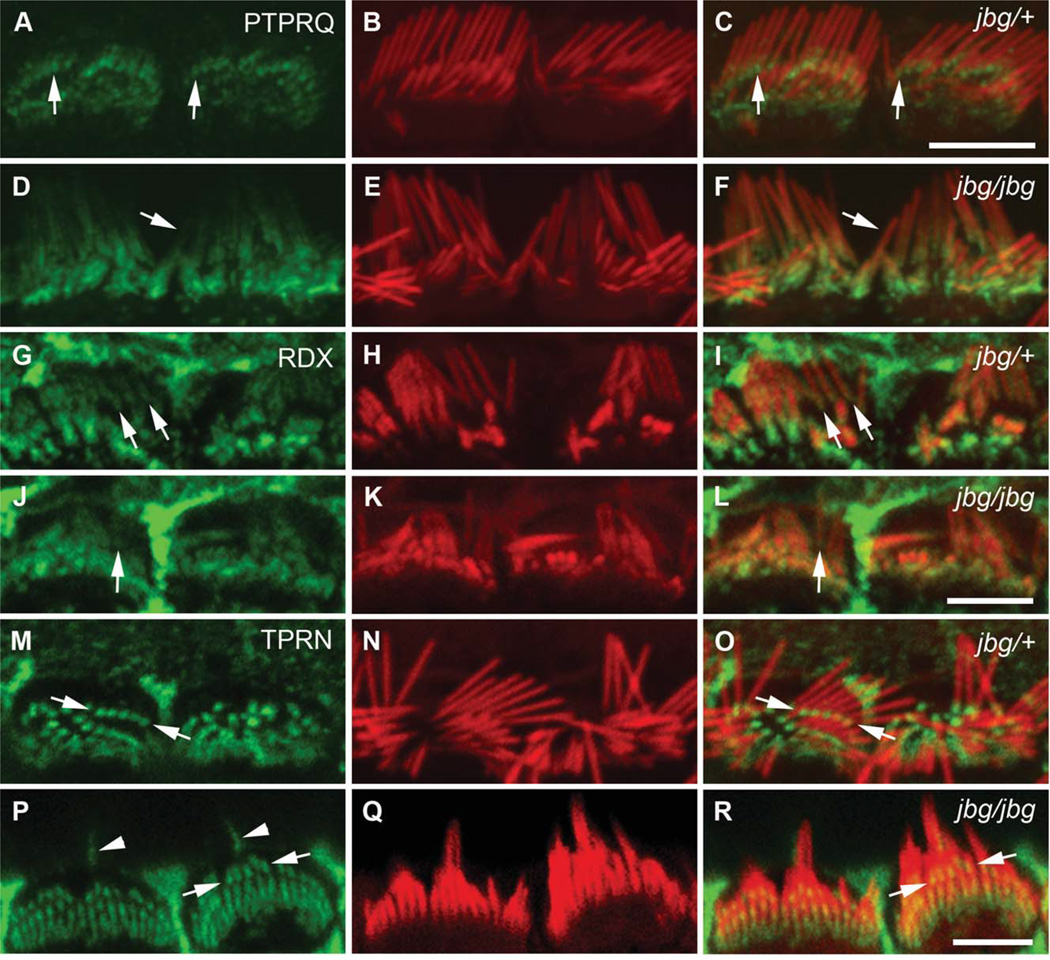Fig. 7.
Localization of PTPRQ, RDX, and TPRN in immature hair cells of jitterbug mutant. Inner hair cells near the apex of the cochlea stained with antibodies (green) against PTPRQ at P10 (A–F), RDX at P7 (G–L), and TPRN at P10 (M–R) and counter-stained with phalloidin (red). (A–F) In control cells (jbg/+), PTPRQ is enriched at the bases of stereocilia (A, C, arrows); in mutant cells (jbg/jbg), PTPRQ labeling extends along the stereocilia shaft and is not restricted to the base (D, F, arrow). (G–L) Control cells exhibit RDX staining enriched at the bases of stereocilia (G, I, arrows); in mutant cells a small amount of RDX extends along the shaft towards the tip of a single stereocilium (J, L, arrow). (M–R) TPRN staining is restricted to the bases of stereocilia in control cells (M, O, arrows) as well as mutant cells (P, R, arrows). Kinocilia are stained positive with the TPRN antibody (P, R, arrowheads). Scale bars: 5 µm.

